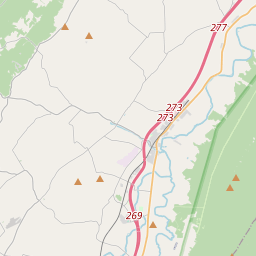Birthplace of the CCC
Historical marker location:






Camp Roosevelt, NF-1
- March 31, 1933: President Franklin D. Roosevelt signs the Emergency Conservation Work (ECW) Act into law, establishing the Civilian Conservation Corps as part of his New Deal program.
- April 5, 1933: The CCC is officially launched, providing employment opportunities for unemployed young men between the ages of 18 and 25.
- 1933-1942: The CCC enrolls over 2.5 million young men from economically disadvantaged families, providing them with jobs, vocational training, and relief during the Great Depression.
Camp Life: CCC enrollees live in camps located in rural areas and work on various conservation projects across the United States. They receive food, shelter, clothing, and a small wage, with a portion of their earnings sent back home to support their families.
Conservation Projects: The CCC undertakes a wide range of conservation projects, including reforestation, erosion control, trail construction, forest fire prevention, wildlife conservation, historic site restoration, and the development of public parks.
Collaboration with Other Agencies: The CCC works in collaboration with various federal agencies, including the National Park Service, U.S. Forest Service, Bureau of Land Management, and Soil Conservation Service, to implement conservation programs and projects.
Educational and Vocational Training: In addition to their work, CCC enrollees receive educational and vocational training, such as literacy classes, courses in conservation and forestry, and technical skills development.
Military Training: During World War II, the CCC shifts its focus to providing military training for its enrollees, preparing them for military service.
- July 1, 1942: As the United States transitions into wartime efforts and the economy improves, the CCC gradually loses its significance. The program officially ends with the termination of new enrollments.
The Civilian Conservation Corps played a significant role during the Great Depression, providing employment, relief, and skills training to young men while accomplishing vital conservation work across the country. The program's legacy can still be seen today in the numerous parks, forests, and other public lands that were developed or improved through the efforts of CCC enrollees.
Jamestown, Virginia, was the first permanent English settlement in the Americas. It was founded in 1607 and served as the capital of Virginia until 1699.
Shenandoah County was established in 1772, named after the Native American word meaning "beautiful daughter of the stars." The early settlers primarily came from German and Scotch-Irish backgrounds, bringing with them their unique cultures and traditions. The county played a crucial role in the American Revolutionary War, with local militias actively involved in the conflict.
During the 19th century, Shenandoah County experienced significant growth and development. The area became known for its productive agricultural practices, particularly in the production of wheat, corn, and apples. In addition to farming, industries such as milling, iron production, and tanning also thrived. The arrival of the railroad in the 1850s further facilitated economic growth and commerce in the region.
The Civil War deeply impacted Shenandoah County, as it became a key battleground between Union and Confederate forces. The Battle of New Market in 1864, fought in the neighboring town, showcased the bravery of cadets from the Virginia Military Institute. After the war, the county faced challenging times as it worked to rebuild its infrastructure and economy.
In the 20th century, Shenandoah County continued to evolve as industries diversified and modernized. Agriculture remained important, but new sectors like manufacturing and tourism emerged. The area's natural beauty, including the stunning Shenandoah River and scenic Shenandoah Valley, attracted visitors from near and far. Today, Shenandoah County honors its history while embracing modern growth, providing a vibrant community for residents and visitors alike.
Shenandoah County Timeline
This timeline provides a concise overview of the key events in the history of Shenandoah County, Virginia.
- 1772 - Shenandoah County is established as one of the original nine counties in Virginia.
- 1785 - The county seat of Shenandoah County is established in Woodstock.
- 1849 - The Virginia Central Railroad is completed, connecting Shenandoah County to other parts of the state.
- 1862 - During the American Civil War, Shenandoah County is the site of several battles, including the Battle of New Market.
- 1908 - Shenandoah Caverns, a popular tourist attraction, is discovered in the county.
- 1974 - The Shenandoah County Historic Society is established to preserve and promote the county's history.
- 2004 - Shenandoah County celebrates its 250th anniversary with various events and activities.